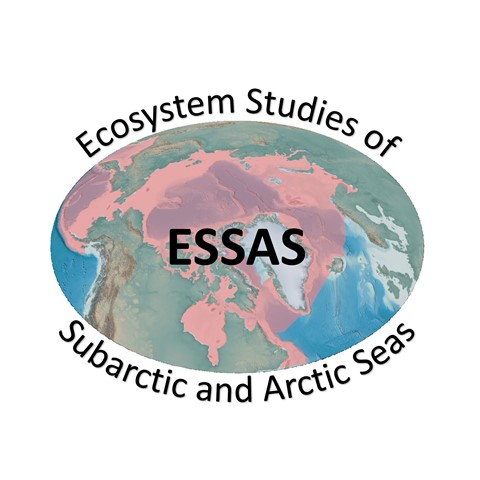NORway-CANada Comparison of Marine Ecosystems (NORCAN)
NORCAN is a comparative study of climate variability in marine ecosystems of the Labrador/Newfoundland region and the Barents Sea/Norwegian Shelf. A special NORCAN volume in Progress in Oceanography is underway with several papers under review. These papers are comparing various aspects of the ecosystem including climate, physical oceanography, phytoplankton production, zooplankton (Calanus finmarchicus) and fish (cod and capelin).
Ecosystem Studies of Subarctic and Arctic Regions (ESSAR) Projects
The International Polar Year was a large scientific program focused on the Arctic and the Antarctic from March 2007 to March 2009. In order to have full and equal coverage of both the Arctic and the Antarctic, IPY 2007-8 covered two full annual cycles from March 2007 to March 2009 and involved over 200 projects, with thousands of scientists from over 60 nations examining a wide range of physical, biological and social research topics. ESSAS coordinated the ESSAR consortium made up of 12 separate projects coming from Canada, China, Denmark, France, Iceland, Japan, Norway, Poland and the United States.
Marine Ecosystem Comparisons Norway-US (MENU I & II)
MENU I was a joint undertaking between Norway and the US financed by the Research Council of Norway. It conducted marine ecosystem comparisons based primarily on observational data for the eastern Bering Sea, the Gulf of Alaska, the Gulf of Maine/Georges Bank and the Norwegian and Barents seas. Five MENU papers were published in a special volume of Progress in Oceanography as part of the proceedings of a theme session on comparative studies held at the 2007 Annual ICES Meeting in Helsinki, Finland. MENU II extends these comparative studies by using several different ecosystem models and expanding the geographic coverage to include the Northern California Current, Southern New England, and the Middle Atlantic Bight in the US and the Scotian Shelf off Canada.











